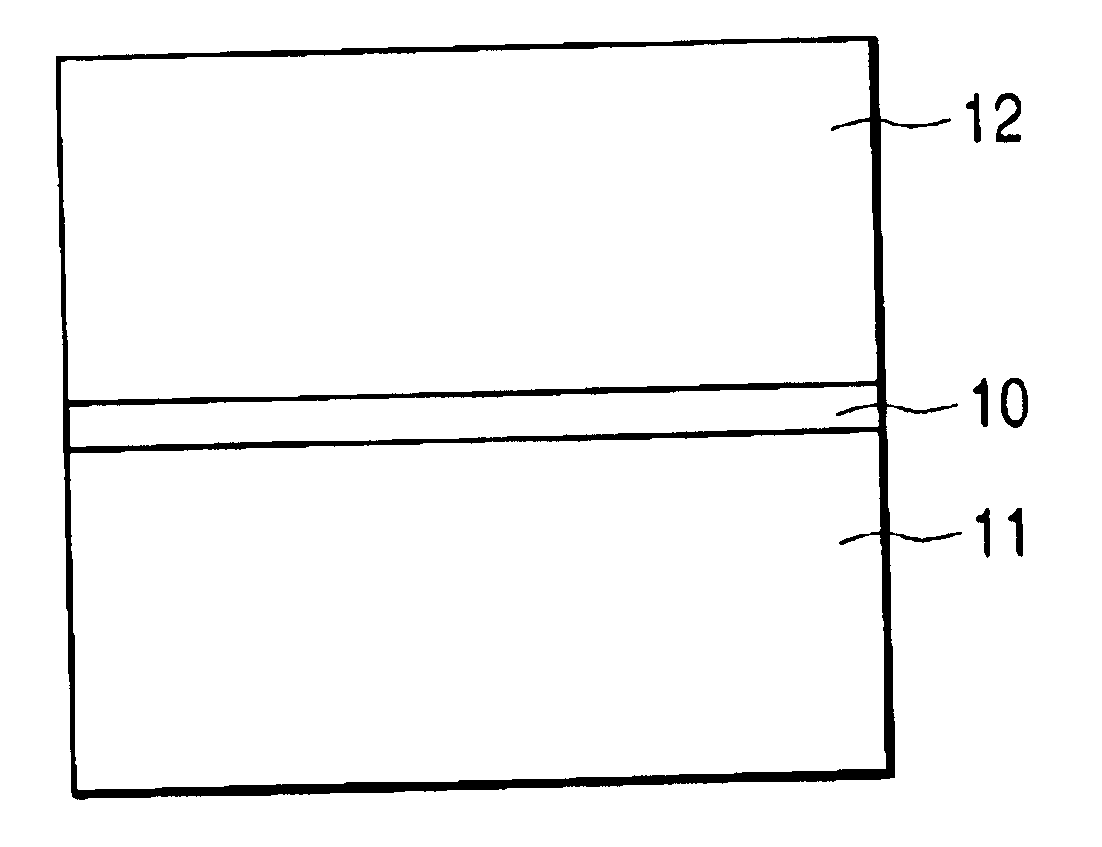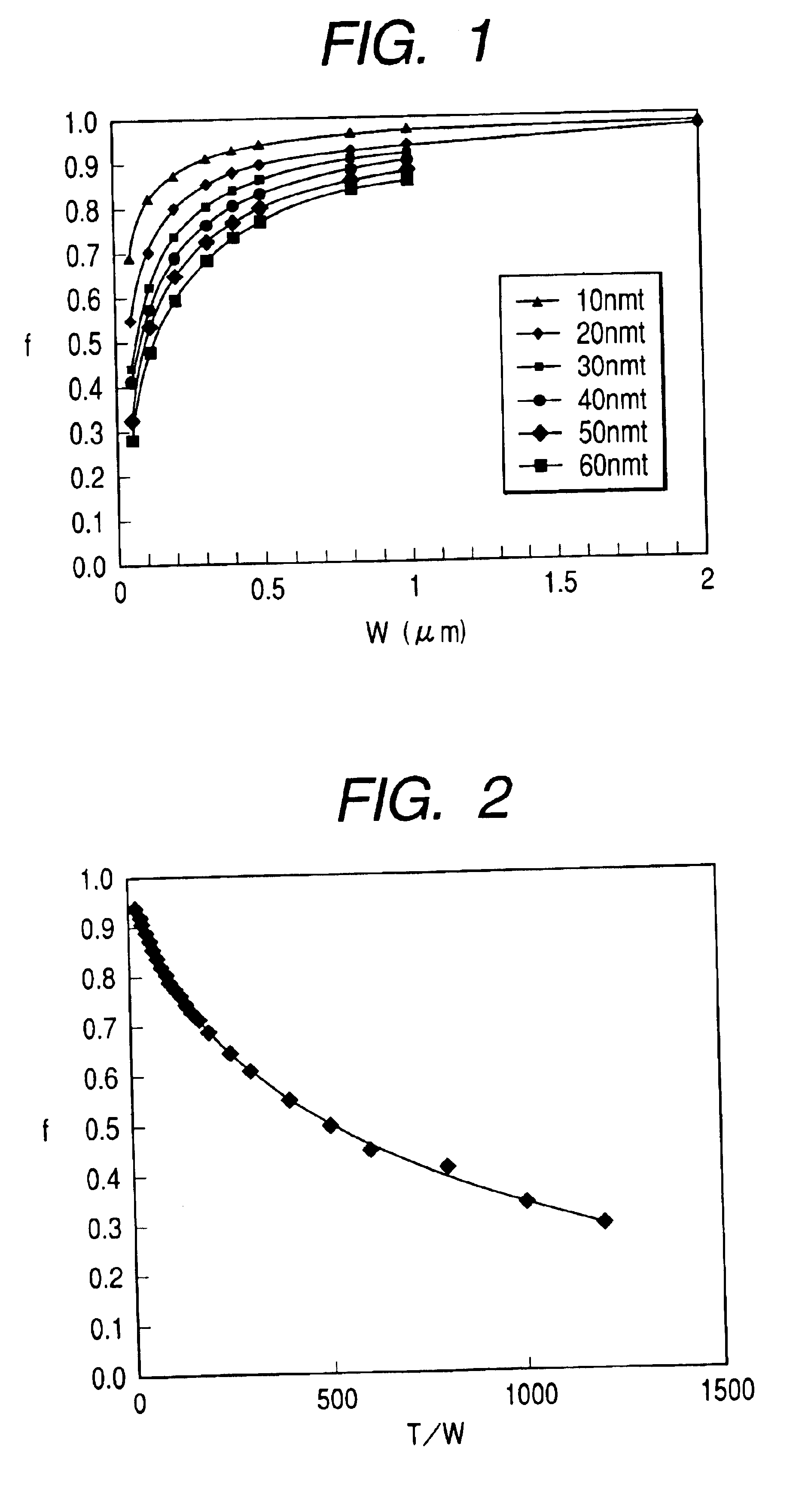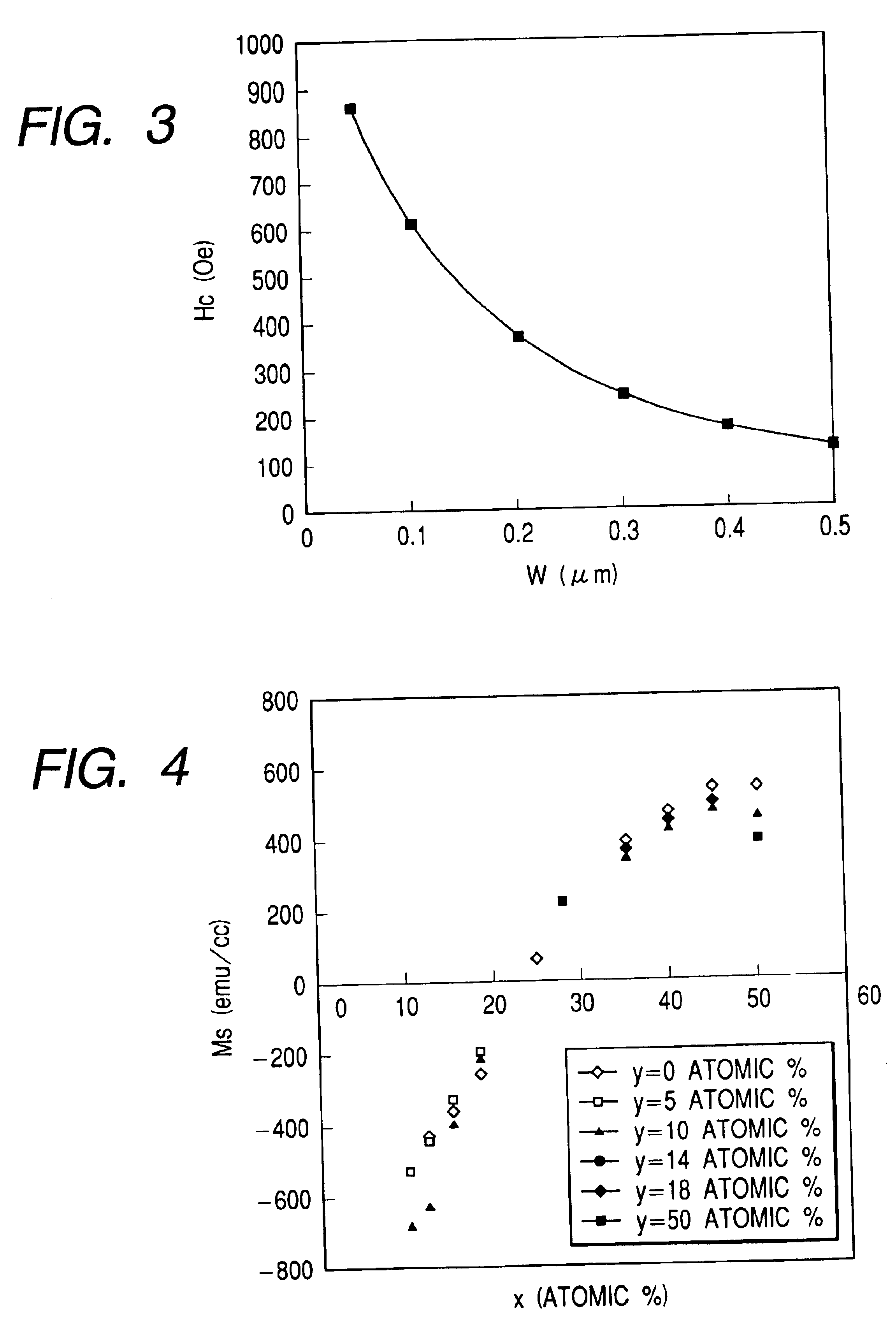Magnetic memory using perpendicular magnetization film
- Summary
- Abstract
- Description
- Claims
- Application Information
AI Technical Summary
Benefits of technology
Problems solved by technology
Method used
Image
Examples
first embodiment
FIG. 7 shows a magnetoresistive element according to the first embodiment. The magnetoresistive element is constituted by stacking a first magnetic layer 11 formed from a perpendicular magnetization film, a nonmagnetic layer 10, and a second magnetic layer 12 formed from a perpendicular magnetization film. The inversion field of the second magnetic layer 12 is larger than that of the first magnetic layer 11. The resistance value upon supplying a current between the first and second magnetic layers 11 and 12 changes depending on the relative angle between the magnetization directions of the first and second magnetic layers 11 and 12. When the magnetoresistive element is used as an MRAM memory element, a magnetic field generation mechanism (not shown) is arranged to switch the magnetization direction of the first magnetic layer 11 of the magnetoresistive element.
To record information on this memory element, a magnetic field is applied to the magnetoresistive element by using the magne...
second embodiment
It is known that when a magnetic substance is miniaturized, magnetization switching occurs by heat energy at a given probability because of super paramagnetism. Super paramagnetism is a phenomenon that when miniaturization of the magnetic substance makes magnetic anisotropy energy equal to heat energy, each magnetic particle thermally vibrates like one atomic magnetic moment of paramagnetism.
Even if the magnetic substance is not miniaturized to a super paramagnetic size, magnetization switching occurs at a given probability of statistical mechanics, and destroys recorded information. This problem has been pointed out for recording media such as a hard disk.
The MRAM also suffers the same problem. In the perpendicular magnetization film, anisotropy energy is given by Ku−2πMs2×f, and f must be considered. Letting v be the volume of the magnetic film, a value Q: Q=v(Ku-2π Ms2f)k Ta(7)
with respect to a temperature energy kT (k is the Boltzmann constant and Ta is the temperature) s...
example 1
FIG. 5 and Table 1 show the inversion field Hc and Q when the saturation magnetization Ms is increased along with miniaturization of the magnetic film. The film thickness of the magnetic film is 50 nm. Q is v×(Ku−2πMs2) / (kT) where k is the Boltzmann constant of 1.38×10−16 erg / K, T is 298 K (room temperature), and v is the volume of the magnetic film (=W×W×film thickness). Q is a value representing the possibility of switching the magnetization of the magnetic substance by thermal agitation. No practical problem occurs as far as Q is 100 or more.
It is apparent from the results that the inversion field does not increase around 130 Oe even with a small width W. In addition, magnetization switching by thermal agitations is free from any problem.
In this manner, an increase in inversion field can be prevented by increasing the saturation magnetization along with downsizing using a ferrimagnet such as an alloy film of a rear-earth element and iron family element as a perpendicular magnetiz...
PUM
 Login to View More
Login to View More Abstract
Description
Claims
Application Information
 Login to View More
Login to View More - R&D
- Intellectual Property
- Life Sciences
- Materials
- Tech Scout
- Unparalleled Data Quality
- Higher Quality Content
- 60% Fewer Hallucinations
Browse by: Latest US Patents, China's latest patents, Technical Efficacy Thesaurus, Application Domain, Technology Topic, Popular Technical Reports.
© 2025 PatSnap. All rights reserved.Legal|Privacy policy|Modern Slavery Act Transparency Statement|Sitemap|About US| Contact US: help@patsnap.com



